- Home
- Patrick O'Brian
Men-of-War Page 2
Men-of-War Read online
Page 2
By the eighteenth century there were many fewer kinds, and they were called by the weight of the shot they fired: a first-rate, for example, carried 30 32-pounders on her lower deck, 28 24-pounders on her middle deck, 30 18-pounders on her upper deck, 10 12-pounders on her quarterdeck and 2 on her forecastle, thus firing a broadside of 1,158 lb. Everything was plain and straightforward: each deck had guns, shot, cartridges and wads of the same size; the guns could be supplied from the magazines as fast as the powder-boys could run; and all that remained was to fire them as quickly and accurately as possible.
This was something of a task, however, for the gun was a massive brute, mounted on a wheeled carriage, and it had to be fired from a deck that might be in violent motion. An 18-pounder, a medium-sized gun, had a barrel nine feet long; it weighed 2,388 lb, and it needed a crew of ten to handle it, for not only did it have to be run in and out, but it had to be kept under rigid control – two tons of metal careering about the deck in a rough sea could kill people and smash through the ship’s side.
The crew included the captain of the gun, the second captain, a sponger, a fireman, some boarders and sail-trimmers, and a powder-boy, with perhaps a couple of Marines to help in the heaving. They were used to working together, and in crack ships they handled their monsters with wonderful skill: it was English gunnery rather than English ships that won the great naval battles. Each man had his own particular job, so in the roar of battle there was no need for orders. When a gun was to be fired the port was opened, the tight lashings that held the gun to the side were cast loose, and the tompion (the bung that kept the muzzle water-tight) taken out. The men hooked on the tackles – one to each side to heave the gun up to the port and the train-tackle behind to run it inboard for loading – and they seized the breeching to the knob at the end of the gun. This breeching was a stout rope made fast to ring-bolts in the ship’s side, and it was long enough to let the gun recoil.
Now, with the gun run in and held by the breeching and the train-tackle, the sponger took the cartridge, a flannel bag with six pounds of powder in it, from the powder-boy, rammed it down the muzzle until the captain felt it in the breech with the priming-iron that he thrust through the touch-hole and cried ‘Home!’ Then the 18-pound shot went down, followed by a wad, both rammed hard: the men clapped on to the side-tackles and ran the loaded gun up, its muzzle as far out as it would go. The captain stabbed the cartridge with his iron, filled the hole and the pan above it with powder from his horn, and the gun was ready to fire, either by a spark from a flint-lock or by a slow-match, a kind of glowing wick. It was aimed right or left by the crew heaving the carriage with their crowbars and handspikes; and the captain, who aimed the gun, could raise or lower it with a wedge under the breech. But although they could send a ball for well over a mile, these guns were not accurate at a distance and they were usually fired at point-blank range – about four hundred yards – or less: indeed, commanders like Nelson preferred to lay their ships yardarm to yardarm, where there was no possibility of missing, and where their double- or treble-shotted guns could fire right through both sides of the enemy.
Guns on a man-of-war. The top gun on the right is run in so that it can be loaded; both of those on the left are in the firing position; and the lower one shows the train-tackle. The fourth gun is housed, that is to say made fast so that it cannot move in a heavy sea.
At the word ‘Fire!’ the captain stubbed the red end of the match into the powder on the pan, the flash ran through the touch-hole to the cartridge and the whole thing went off with an almighty bang. The shot flew out at 1,200 feet a second, the entire gun leapt backwards with terrible force until it was brought up by the breeching, and the air was filled with dense, acrid smoke. The moment it was inboard the captain stopped the vent, the men at the train-tackle held the gun tight, the sponger thrust his wet mop down to clean the barrel and put out any smouldering sparks, another cartridge, shot and wad were rammed home, and the gun was run up again, hard against the port.
It was heavy, dangerous work, above all in action, with the whole broadside firing: the low space ’tween decks would be filled with smoke; little could be seen, little heard, and the slightest false move meant the loss of a leg or an arm from the recoiling gun, to say nothing of the risks of explosion or the enemy’s fire. Yet a well-trained crew could carry out the whole operation in one minute forty seconds – three broadsides in just five minutes.
They could do this even in the heat of battle, although some members of the gun-crew had other duties as well. The boarders had their cutlasses ready in their belts and they would leave the gun to batter the enemy by hand at the cry of ‘Boarders away!’ The sail-trimmers would go to their stations when called upon; the fireman had to be ready with his bucket to dash out the first beginnings of a flame aboard; and the second captain to see that the corresponding gun on the other side of the deck was prepared, for few ships had enough people to man two sides at once, and the same crew fought both port and starboard guns.
What they fired was mostly single round shot – the ordinary cannon-ball – and a 32-pounder could smash through two feet of solid oak at half a mile; but at close range they also used grape (a great many small balls in a canvas bag that burst when it was fired, scattering the balls over the enemy’s deck and discouraging his crew), canister (much the same), and bar or chain shot to cut up his rigging.
Right through the eighteenth century the Navy used these guns with little change: the 42-pounders were laid aside as being too heavy for even a first-rate (the Britannia, or Old Ironsides as she was called from her massive timbers, was the last to keep them), and the 32, 24, 18, 12, 9, 6, 4 and 3-pounders were the usual armament. Then in 1779 the carronade or smasher was invented: this was a much lighter, shorter gun mounted on slides and designed for close-range fighting. It threw an enormous ball for its weight.
The first ship to be entirely armed with them, by way of experiment, was the Rainbow, an old 44. Before this she had carried 20 ordinary 18-pounder long guns on her lower deck, 22 12-pounders on her main deck, and two 6-pounders on her forecastle – a broad-side weight of metal of 318 lb, needing about 100 lb of powder to fire it. Now she had 20 68-pounder carronades on her lower-deck, 22 42-pounders on her main-deck, four 32-pounders on her quarterdeck and two on her forecastle – a broadside of 1,238 lb, still needing only about 100 lb of powder, since the charge of the carronade was one twelfth of the weight of its ball, as opposed to the long gun’s one third.
The Rainbow put to sea, and after six months she found an enemy of the right size – the powerful French 40-gun frigate Hébé. The action began in fine style, but to the Rainbow’s intense irritation it stopped almost at once. The French captain, seeing these horrible great 32-pound balls coming from the Englishman’s forecastle, rightly assumed that there was even worse in store, and struck his colours.
By now it was 1782; the war was almost over and it was too late to try out the carronade in earnest. But by 1793, when the next war began, the Navy was well stocked with them, and they did splendid service in the years to come. They did not replace the long guns, however, most of the carronades being 18or 12-pounders on the forecastle, quarterdeck and poop. Curiously enough, they were never counted in with the rest of the ship’s armament, a 24-gun ship like the Hyaena, which mounted ten 12-pounder carronades as well as her long guns, remaining a 24-gun ship for official purposes. Firing point-blank meant firing with the gun level: to make the ball go farther one would raise the muzzle, giving it so many degrees of elevation. But point-blank was the most accurate way of firing. When a ball hit the water it would often go skipping over the surface in great bounds: the first impact, however, was by far the most deadly.
The great guns were the man-of-war’s chief armament, of course; but they were not the only weapon aboard, by any means. She also carried muskets, for the use of the Marines and the small-arms men in the fighting-tops, pistols, axes and cutlasses for boarding, stinkballs (made of pitch, resin, brimstone, gunp
owder and asafoetida in an earthenware pot: it was set on fire and thrown so as to burst among the enemy and overwhelm him with the stench), and grenades for tossing on to the enemy’s deck, and boarding-pikes to repel him if he tried to come over the side. We might even add soot to the list, since Lord Cochrane, setting about the 32-gun frigate El Gamo with his 14-gun brig Speedy in 1803, made his men black their faces in the galley before boarding, to the unspeakable dismay of the Spaniards, who yielded less to the Speedy’s little 4-pounders than to the truly hideous appearance of her crew.
Table showing the size and weight of long guns and carronades
Table showing the range of guns and carronades
From the man-of-war’s armoury, a selection of weapons.
The Ship’s Company
Now for the men who sailed the ships and fought the guns, and first the officers. Let us take a boy who wants to go to sea and follow him through his career as an officer from bottom to top; and let him be a courageous boy with a cast-iron digestion and lucky enough not to put his head in the way of a cannon-ball, so that he may stay the course. He is a typical boy of quite good family – probably a sea-officer’s son or, like Nelson and Jane Austen’s brothers, a parson’s – but he is not highly educated, since he goes to sea when he is twelve or fourteen, and he has not had much time for school. (Officially the earliest age was eleven for officers’ sons and thirteen for the rest, but no one took much notice of the regulation – seven-year-olds were not unknown.) Before he can go to sea his people have to find some captain who is willing to take him aboard, for this is almost the only way to become an officer. They succeed, and the young hero joins his ship with his sea-chest: it is filled to over-flowing, since the captain has not only insisted on the boy’s parents giving him an allowance of as much as £50 a year if it is anything like a crack ship, but he will also have sent them a list of necessities. Here is a moderate example:
1 uniform coat superfine cloth
1 uniform coat second best
1 round jacket suit
1 surtout coat and watch-coat
3 pairs of white jean trowsers and waistcoats
3 pairs of nankeen ditto and 3 kerseymere waistcoats
2 round hats with gold loop and cockade
1 glazed hat, hanger (or dirk) and belt
18 linen shirts, frilled
12 plain calico shirts
3 black silk handkerchiefs
12 pocket cotton ditto
12 pairs of brown cotton stockings
6 pairs of white cotton stockings
6 pairs worsted or lamb’s wool stockings
2 strong pairs of shoes and 2 light pairs
6 towels and 3 pairs of sheets and pillow-cases
2 table-cloths about 3 yards long
A mattress, 3 blankets and a coverlet
A set of combs and clothes-brushes
A set of tooth-brushes and tooth-powder
A set of shoe-brushes and 12 cakes of blacking or ½ doz. bottles of ditto
A pewter wash-hand basin and a pewter cup
A strong sea-chest with a till and 2 trays in it, and a good lock with 2 keys
A quadrant and a small day and night glass
A silver table-spoon and tea-spoon
A knife and fork, and a pocket-knife and penknife
A log-book and journal with paper, pens and ink
Robinson’s Elements of Navigation
The Requisite Tables and Nautical Almanac
Bible, prayer-book
When going on a foreign station, an additional dress-suit, with more light waistcoats, a cocked hat, and some additional linen.
He reports his presence to the officer of the watch and he is taken to the midshipmen’s berth: this is likely to be something of a shock to him, since it is a dank, smelly, cheerless hole with no light or air and precious little in the way of food or comfort, very far down in the ship. The midshipmen’s berth: but he is not a midshipman – far from it. He is rated first-class volunteer if there is room for one on the ship’s books, or captain’s servant or even able seaman if there is not, and he will not become a real midshipman for a couple of years. But he does not black the captain’s boots, of course, nor attempt an able seaman’s duties; he and all like him are called ‘the young gentlemen’ and he wears a midshipman’s uniform (blue coat with a white patch on the collar, white breeches and cocked hat for formal occasions, otherwise blue jacket with blue or white trousers and a top hat, and a sword or dirk). Above all, he walks the quarterdeck, the officers’ preserve. He has to walk it for six years, learning his duty aloft and on deck, going to the ship’s schoolmaster in the mornings for mathematics and navigation, and keeping his official journal; and all this time, whether he is captain’s servant, midshipman or master’s mate (a senior midshipman) he is in fact only a rating, liable to be disrated at his captain’s pleasure or even turned ashore; and if he behaves badly he can be punished, often being sent to the mast-head like the young gentleman in the picture, to spend several hours there, repenting of his sins.
At the end of his six years at sea he goes to the Navy Office, bearing certificates of competence and good behaviour from his captains, his journals, and perhaps a paper to say he is twenty. In theory this was the minimum age for a lieutenant, but in fact there were some of fifteen and sixteen. Six years on the ship’s books, two of them as a midshipman, was insisted upon, however.
So here he is at the Navy Office with a trembling heart, trying to remember the difference between port and starboard; and here they put him through an oral examination in seamanship and navigation. He is not a booby: he has learnt a good deal in his six years afloat; and he gets through. He has ‘passed for lieutenant’! He is charmed, delighted, but still very anxious; for it is one thing to pass and quite another to be given the precious commission. However, he has done well at sea, his captains speak well of him, his family has some influence in politics or at the Admiralty, and one day there arrives a beautiful piece of paper covered with official seals and signatures, reading:
By the Commissioners for executing the Office of Lord High Admiral of Great Britain and Ireland &c and of all His Majesty’s Plantations &c
To Lieutenant William Blockhead, hereby appointed Lieutenant of His Majesty’s Ship the Thunderer
By Virtue of the Power and Authority to us given We do hereby constitute and appoint you Lieutenant of His Majesty’s Ship the Thunderer, willing and requiring you forthwith to go on board … Strictly charging and Command-ing all the Officers and Company belonging to the said Thunderer subordinate to you to behave themselves jointly and severally … with all due Respect and Obedience … And you shall likewise to observe and execute … what orders and directions … you shall receive from your Captain or any other your superior Officers … Hereof nor you nor any of you may fail as you will answer the contrary at your peril.
Now he is a real officer at last, with the King’s commission. He comes down on his poor father for a splendid new uniform (a blue coat with white cuffs and white lapels reaching right down his front, white waistcoat and breeches for full dress to be worn on grand occasions, and a plainer blue coat, often worn with trousers or blue breeches, for ordinary wear). He hopes this will be the last time he will have to do so, for now he is earning no less than £5 12s od a month, and there is always the golden prospect of prize-money. His father hopes so too.
He joins the Thunderer, 74, his commission is solemnly read out to the ship’s company, and he takes up his quarters in the ward-room, together with the other lieutenants, the Marine officers, the master, the surgeon, the chaplain and the purser; it is a handsome room in a 74, with plenty of air and light coming through the great stern window, and he even has a tiny cabin of his own. He forswears the squalor of the midshipmen’s berth for ever and settles down to his new duties. The years go by; and usually he moves from ship to ship, gaining a great deal of experience. He becomes more and more senior on the lieutenants’ list as his elders are killed or promoted
, and in time he is first lieutenant, no longer keeping a watch but responsible for the day-to-day running of the ship, her discipline and her appearance. He draws no extra pay, but he is next in line for promotion, and at last it comes – his ship distinguishes herself in battle and her first lieutenant is made master and commander. He leaves the Thunderer after a last splendid party, buys another uniform (a blue gold-laced coat and white breeches for full dress, the same coat and blue breeches for undress) and waits to be given a command of his own. This is another anxious period, for he knows very well that there are about four hundred commanders on the Navy List and no more than about a hundred sloops, the only vessels they can command.
And now, while he is waiting, stirring up all his friends to use their influence, I will say something about uniforms. It is a very curious fact, but before 1748 the Royal Navy had none at all: the officers wore what they thought fit – often red coats, sometimes old tweed breeches at sea, and any kind of hat that caught their fancy. Then in that year uniform was laid down for the officers, but it was not until 1857 that the men had one – they fought the Battle of Trafalgar in anything from petticoat breeches (a kind of depraved kilt dating from the middle ages) to canvas trousers, with fur caps, top hats or handkerchiefs on their heads, and jerseys or chequered shirts; though most wore the purser’s slops, which were roughly of a pattern. But although he had no uniform, the man-of-war’s man could be recognized at once, particularly when he was in his shore-going rig: this usually consisted of a shiny black glazed tarpaulin hat (hence Jack Tar for a sailor) with a long dangling ribbon embroidered with the name of his ship, a bright blue jacket with gilt buttons down the right side, very broad, loose trousers, white or blue, tiny black shoes with bows or silver buckles, a shirt, white, spotted, striped or coloured, open at the collar, and black silk handkerchief loosely knotted round the neck, and a long scarlet waistcoat, the whole decorated with ribbons at the seams, for glory. As well as this he often had little gold earrings and a long swinging pigtail (those whose hair did not grow would sometimes eke it out with oakum), so that there was no mistaking the man-of-war’s man, particularly as he chewed his tobacco rather than smoking it like a Christian. I will also say something about sloops. Rightly speaking, a sloop is and always was a one-masted fore-and-aft vessel; but the Admiralty extended the term to cover ships and other craft that could be commanded by a master and commander, so that when a man-of-war brig had a lieutenant as her captain she was a brig (with two masts), but the moment a commander took her over she became a mere sloop, to the unspeakable amazement of landsmen.

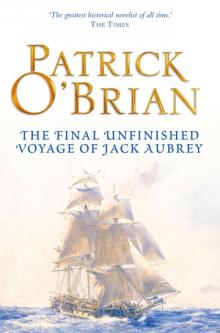 The Final Unfinished Voyage of Jack Aubrey
The Final Unfinished Voyage of Jack Aubrey The Rendezvous and Other Stories
The Rendezvous and Other Stories Caesar: The Life Story of a Panda-Leopard
Caesar: The Life Story of a Panda-Leopard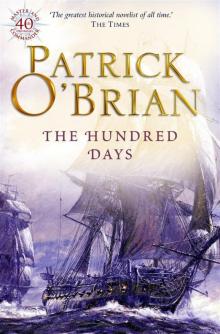 The Hundred Days
The Hundred Days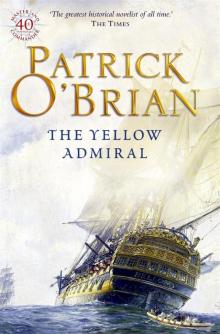 The Yellow Admiral
The Yellow Admiral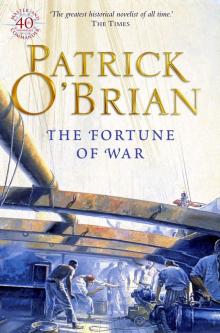 The Fortune of War
The Fortune of War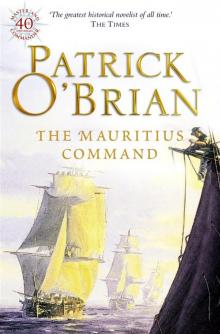 The Mauritius Command
The Mauritius Command Beasts Royal: Twelve Tales of Adventure
Beasts Royal: Twelve Tales of Adventure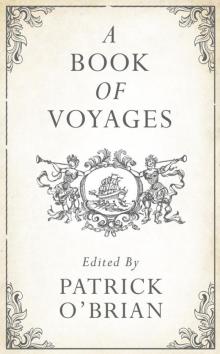 A Book of Voyages
A Book of Voyages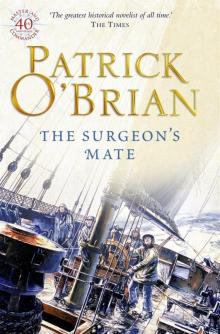 The Surgeon's Mate
The Surgeon's Mate The Golden Ocean
The Golden Ocean Hussein: An Entertainment
Hussein: An Entertainment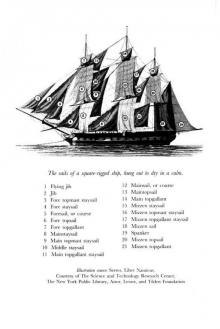 H.M.S. Surprise
H.M.S. Surprise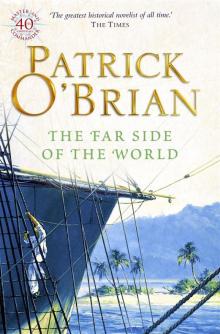 The Far Side of the World
The Far Side of the World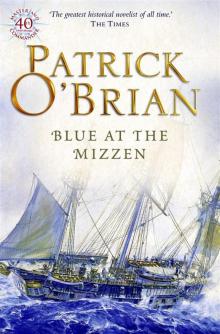 Blue at the Mizzen
Blue at the Mizzen The Unknown Shore
The Unknown Shore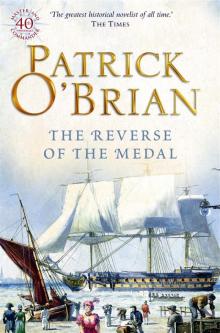 The Reverse of the Medal
The Reverse of the Medal Testimonies
Testimonies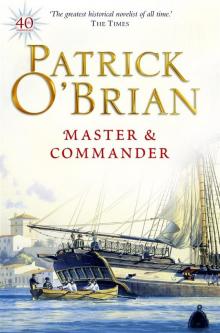 Master and Commander
Master and Commander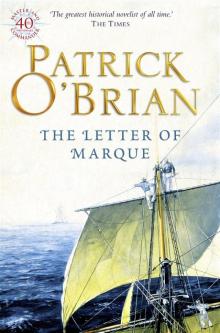 The Letter of Marque
The Letter of Marque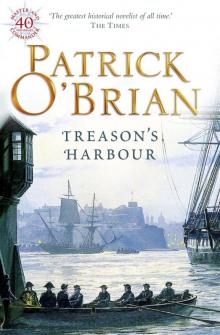 Treason's Harbour
Treason's Harbour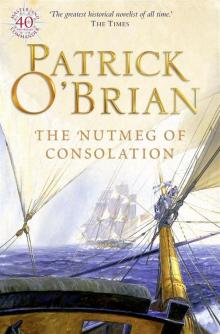 The Nutmeg of Consolation
The Nutmeg of Consolation 21: The Final Unfinished Voyage of Jack Aubrey
21: The Final Unfinished Voyage of Jack Aubrey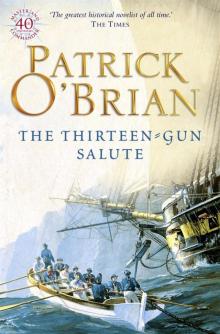 The Thirteen-Gun Salute
The Thirteen-Gun Salute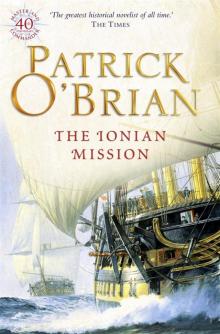 The Ionian Mission
The Ionian Mission Men-of-War
Men-of-War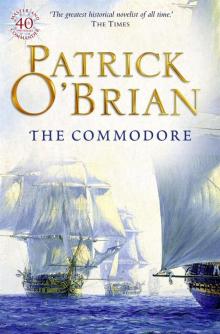 The Commodore
The Commodore The Catalans
The Catalans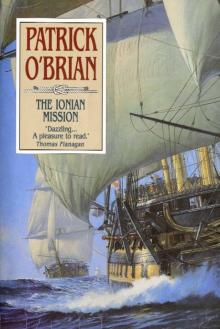 Aub-Mat 08 - The Ionian Mission
Aub-Mat 08 - The Ionian Mission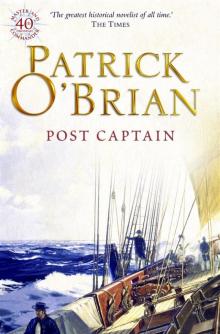 Post Captain
Post Captain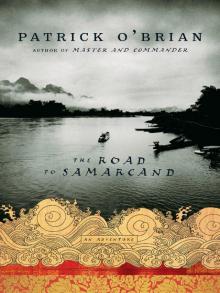 The Road to Samarcand
The Road to Samarcand Book 20 - Blue At The Mizzen
Book 20 - Blue At The Mizzen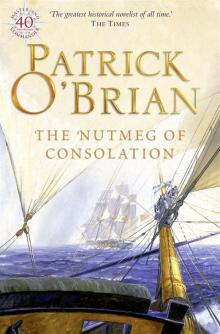 Book 14 - The Nutmeg Of Consolation
Book 14 - The Nutmeg Of Consolation Caesar
Caesar The Wine-Dark Sea
The Wine-Dark Sea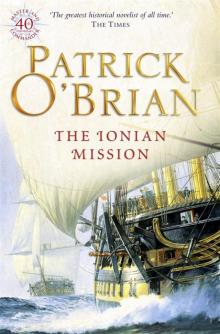 Book 8 - The Ionian Mission
Book 8 - The Ionian Mission Book 12 - The Letter of Marque
Book 12 - The Letter of Marque Hussein
Hussein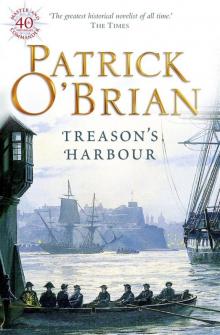 Book 9 - Treason's Harbour
Book 9 - Treason's Harbour Book 19 - The Hundred Days
Book 19 - The Hundred Days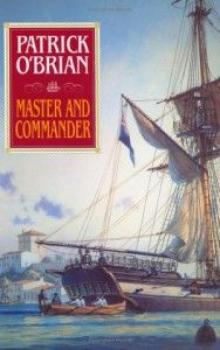 Master & Commander a-1
Master & Commander a-1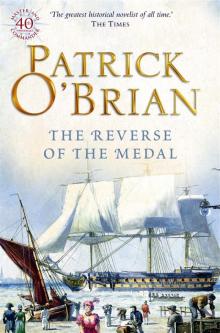 Book 11 - The Reverse Of The Medal
Book 11 - The Reverse Of The Medal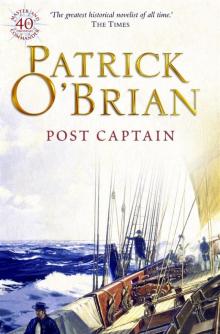 Book 2 - Post Captain
Book 2 - Post Captain The Truelove
The Truelove The Thirteen Gun Salute
The Thirteen Gun Salute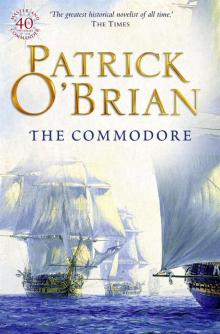 Book 17 - The Commodore
Book 17 - The Commodore The Final, Unfinished Voyage of Jack Aubrey
The Final, Unfinished Voyage of Jack Aubrey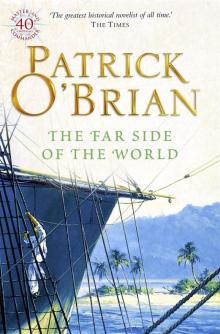 Book 10 - The Far Side Of The World
Book 10 - The Far Side Of The World Book 5 - Desolation Island
Book 5 - Desolation Island Beasts Royal
Beasts Royal Book 18 - The Yellow Admiral
Book 18 - The Yellow Admiral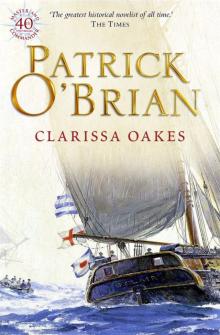 Book 15 - Clarissa Oakes
Book 15 - Clarissa Oakes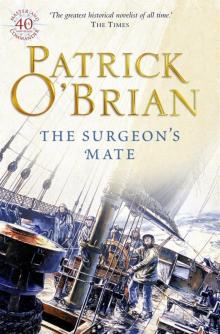 Book 7 - The Surgeon's Mate
Book 7 - The Surgeon's Mate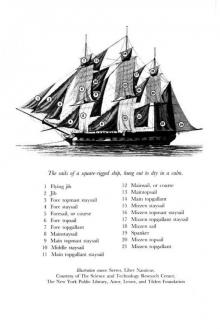 Book 3 - H.M.S. Surprise
Book 3 - H.M.S. Surprise Desolation island
Desolation island Picasso: A Biography
Picasso: A Biography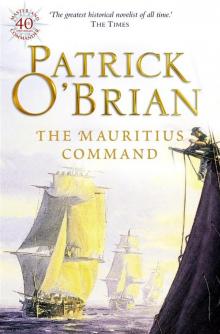 Book 4 - The Mauritius Command
Book 4 - The Mauritius Command Book 1 - Master & Commander
Book 1 - Master & Commander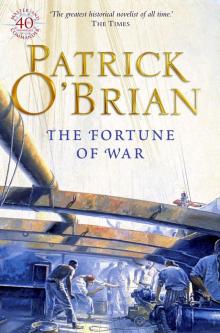 Book 6 - The Fortune Of War
Book 6 - The Fortune Of War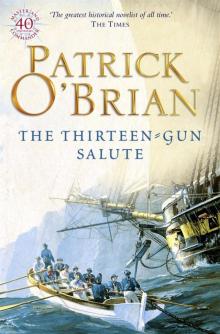 Book 13 - The Thirteen-Gun Salute
Book 13 - The Thirteen-Gun Salute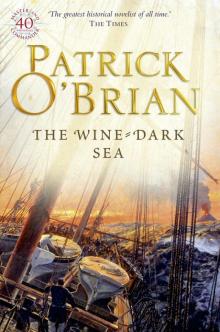 Book 16 - The Wine-Dark Sea
Book 16 - The Wine-Dark Sea